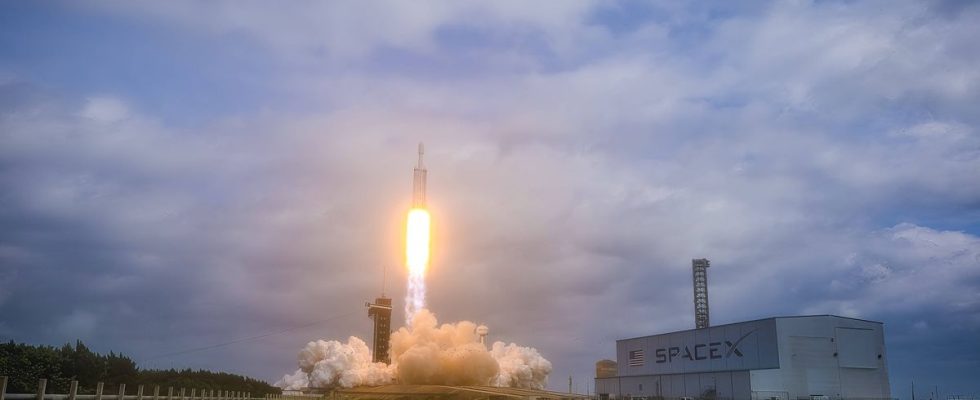She sets out to attack a world of metal that has never before been studied. For the first time, a NASA probe travels to an object whose surface is composed not of rock, ice or gas, but of metal: the asteroid Psyche.
By studying this strange object, scientists hope to learn more about the core of rocky planets like ours, or to identify a new type of celestial body that is still completely unknown. Here are five interesting facts about this mission, which took off on Friday.
Metal mine
If mining Psyche were possible, its iron, nickel and gold would be worth a modest $10 trillion, according to an estimate by Forbes magazine.
But the person behind the calculation, Lindy Elkins-Tanton, the mission’s chief scientist, said it was just “a fun intellectual exercise.” “We have no technology, as a species, to bring Psyche back to Earth,” she said at a recent press conference. Even if it were possible, the amount of metal made from it would flood the market, reducing its value to zero, she said.
Green propulsion
During its long journey, the probe will use an innovative mode of propulsion: four Hall effect thrusters, which produce a characteristic blue light. Psyche’s solar panels convert light into electricity. This electricity is then used by the four motors to accelerate and expel ions (atoms charged with electricity) of a gas which is also used in plasma screens or car headlights (xenon gas).
Despite the relatively low thrust generated, thanks to the absence of friction in the vacuum of space, the probe will still accelerate up to tens of thousands of km/h. “You can think of it as getting thrust from sunlight,” summarized David Oh, an engineer at NASA. “It’s green propulsion par excellence. »
Laser communication
Space missions involve the transmission of an increasingly large volume of data, as the technology they carry improves. NASA is therefore seeking to turn to laser communications systems, instead of traditional radio communications.
Psyche will carry an experiment, expected to enable “a 10-fold increase in traditional data transmission rates,” said Abi Biswas of NASA’s Jet Propulsion Laboratory (JPL). This will allow the sending of very high resolution images, more scientific data and videos. The laser will be aimed from JPL’s Table Mountain Observatory in California and the spacecraft will in return aim at the Palomar Observatory, also in California.
The technology has already been tested but this will be the first time over longer distances, beyond lunar orbit. The idea is to be able to use it for missions to Mars in the future.
Severity
Psyche carries three sophisticated scientific instruments to study the asteroid. But to study its gravity, the probe will use… its good old radio. “We can look at the tone or frequency of the radio waves coming back to the antennas, and determine how fast the probe is moving” around the asteroid, explained planetary scientist Ben Weiss. Much like the sound of ambulance sirens sounds differently as it gets closer and then further away.
By precisely tracking changes in the probe’s velocity, scientists can determine variations in the asteroid’s gravitational field. This will allow conclusions to be drawn about the composition and internal structure of Psyche.
Less metal, more rock?
Given Psyche’s brilliance, until recently there was a consensus: the asteroid must be made almost entirely of metal. Which would correspond to the theory according to which it is the core of an ancient celestial body, the surface of which was torn off by ancient collisions.
But researchers found, in a study published in 2022, that Psyche was actually less dense than what would be expected of a body made entirely of iron. One possibility is that volcanoes brought iron to the surface, covering the rock with a layer of metal. Response when the probe reaches its target, in 2029.

